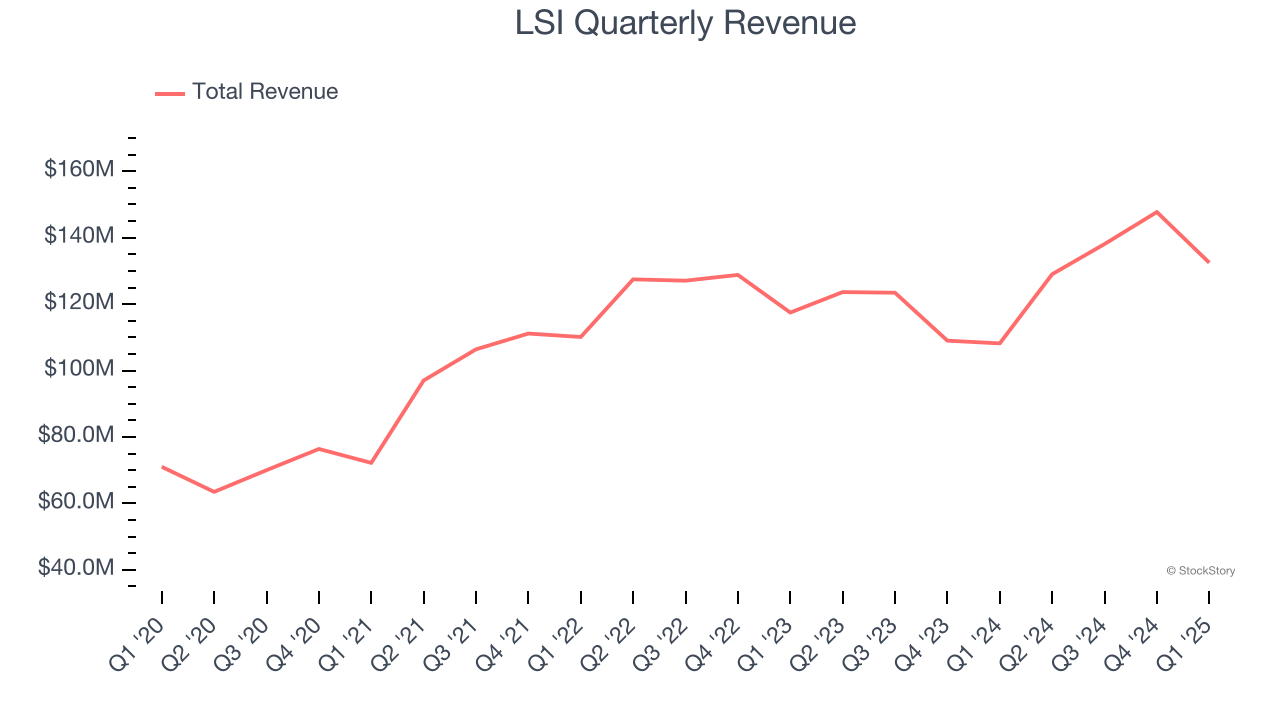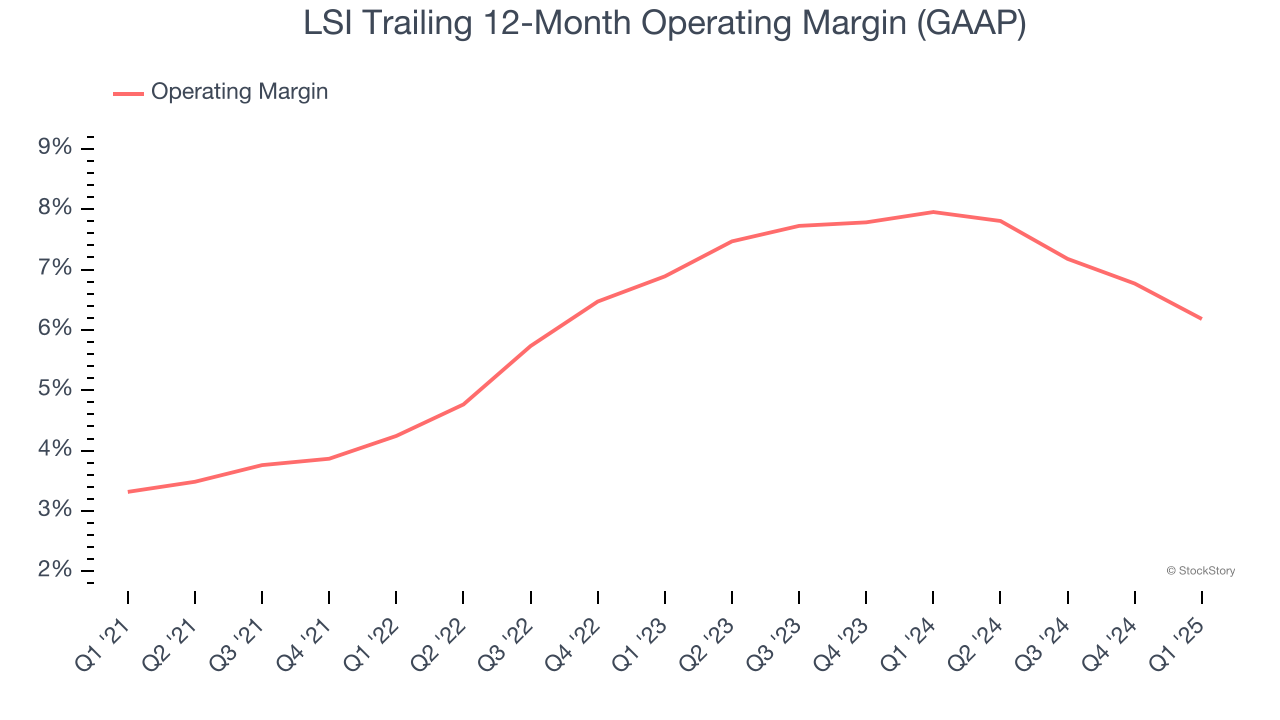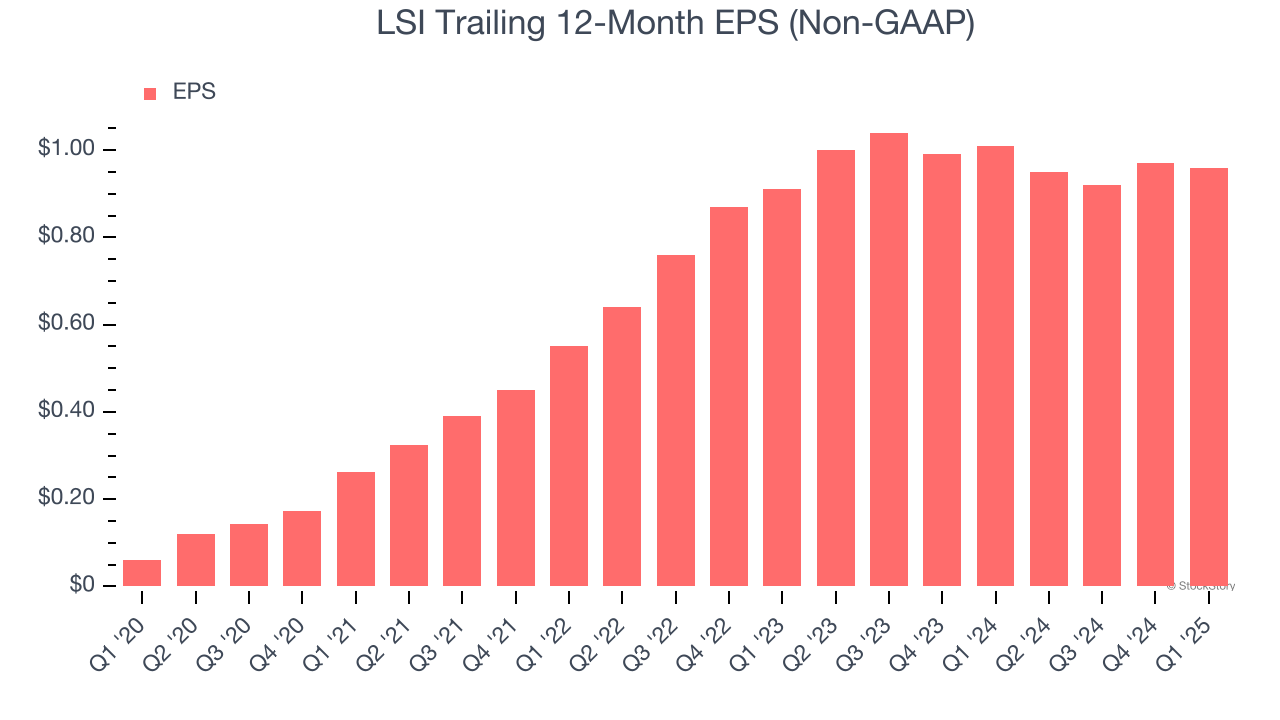
Commercial lighting and retail display solutions provider LSI (NASDAQ: LYTS) reported Q1 CY2025 results beating Wall Street’s revenue expectations, with sales up 22.5% year on year to $132.5 million. Its non-GAAP profit of $0.20 per share was in line with analysts’ consensus estimates.
Is now the time to buy LSI? Find out by accessing our full research report, it’s free.
LSI (LYTS) Q1 CY2025 Highlights:
- Revenue: $132.5 million vs analyst estimates of $129.7 million (22.5% year-on-year growth, 2.1% beat)
- Adjusted EPS: $0.20 vs analyst estimates of $0.21 (in line)
- Adjusted EBITDA: $11.25 million vs analyst estimates of $11.79 million (8.5% margin, 4.5% miss)
- Operating Margin: 4.7%, down from 7.2% in the same quarter last year
- Free Cash Flow Margin: 3.6%, down from 10.3% in the same quarter last year
- Market Capitalization: $456.9 million
“Our Company delivered solid fiscal third quarter results, achieving sales growth of 22%, while successfully managing a period of significant variability in customer project schedules and demand levels,” stated James A. Clark, President, and Chief Executive Officer of LSI.
Company Overview
Enhancing commercial environments, LSI (NASDAQ: LYTS) provides lighting and display solutions for businesses and retailers.
Electrical Systems
Like many equipment and component manufacturers, electrical systems companies are buoyed by secular trends such as connectivity and industrial automation. More specific pockets of strong demand include Internet of Things (IoT) connectivity and the 5G telecom upgrade cycle, which can benefit companies whose cables and conduits fit those needs. But like the broader industrials sector, these companies are also at the whim of economic cycles. Interest rates, for example, can greatly impact projects that drive demand for these products.
Sales Growth
A company’s long-term sales performance is one signal of its overall quality. Any business can put up a good quarter or two, but the best consistently grow over the long haul. Over the last five years, LSI grew its sales at an impressive 11.1% compounded annual growth rate. Its growth beat the average industrials company and shows its offerings resonate with customers.

Long-term growth is the most important, but within industrials, a half-decade historical view may miss new industry trends or demand cycles. LSI’s recent performance shows its demand has slowed significantly as its annualized revenue growth of 4.5% over the last two years was well below its five-year trend. 
This quarter, LSI reported robust year-on-year revenue growth of 22.5%, and its $132.5 million of revenue topped Wall Street estimates by 2.1%.
Looking ahead, sell-side analysts expect revenue to grow 6.2% over the next 12 months. Although this projection suggests its newer products and services will catalyze better top-line performance, it is still below the sector average.
Here at StockStory, we certainly understand the potential of thematic investing. Diverse winners from Microsoft (MSFT) to Alphabet (GOOG), Coca-Cola (KO) to Monster Beverage (MNST) could all have been identified as promising growth stories with a megatrend driving the growth. So, in that spirit, we’ve identified a relatively under-the-radar profitable growth stock benefiting from the rise of AI, available to you FREE via this link.
Operating Margin
LSI was profitable over the last five years but held back by its large cost base. Its average operating margin of 6% was weak for an industrials business. This result isn’t too surprising given its low gross margin as a starting point.
On the plus side, LSI’s operating margin rose by 2.9 percentage points over the last five years, as its sales growth gave it operating leverage.

In Q1, LSI generated an operating profit margin of 4.7%, down 2.5 percentage points year on year. Since LSI’s gross margin decreased more than its operating margin, we can assume its recent inefficiencies were driven more by weaker leverage on its cost of sales rather than increased marketing, R&D, and administrative overhead expenses.
Earnings Per Share
Revenue trends explain a company’s historical growth, but the long-term change in earnings per share (EPS) points to the profitability of that growth – for example, a company could inflate its sales through excessive spending on advertising and promotions.
LSI’s EPS grew at an astounding 74.1% compounded annual growth rate over the last five years, higher than its 11.1% annualized revenue growth. This tells us the company became more profitable on a per-share basis as it expanded.

Diving into LSI’s quality of earnings can give us a better understanding of its performance. As we mentioned earlier, LSI’s operating margin declined this quarter but expanded by 2.9 percentage points over the last five years. This was the most relevant factor (aside from the revenue impact) behind its higher earnings; taxes and interest expenses can also affect EPS but don’t tell us as much about a company’s fundamentals.
Like with revenue, we analyze EPS over a more recent period because it can provide insight into an emerging theme or development for the business.
For LSI, its two-year annual EPS growth of 2.7% was lower than its five-year trend. We hope its growth can accelerate in the future.
In Q1, LSI reported EPS at $0.20, in line with the same quarter last year. This print missed analysts’ estimates, but we care more about long-term EPS growth than short-term movements. Over the next 12 months, Wall Street expects LSI’s full-year EPS of $0.96 to grow 25%.
Key Takeaways from LSI’s Q1 Results
We enjoyed seeing LSI beat analysts’ revenue expectations this quarter. On the other hand, its EBITDA fell short of Wall Street’s estimates. Overall, this was a softer quarter. The stock remained flat at $15.88 immediately after reporting.
So do we think LSI is an attractive buy at the current price? We think that the latest quarter is only one piece of the longer-term business quality puzzle. Quality, when combined with valuation, can help determine if the stock is a buy. We cover that in our actionable full research report which you can read here, it’s free.





